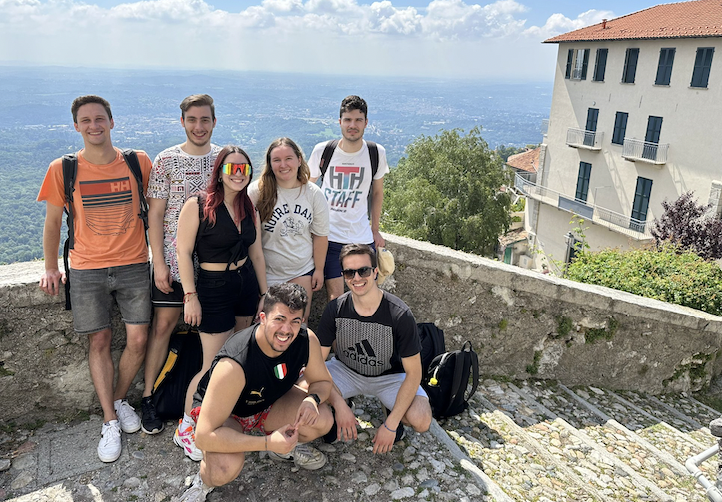I’m writing this blog post from a less-than-comfortable terminal seat in the Milan-Malpensa Airport, reflecting on my past ten weeks studying both chemistry and Italian at l’Università degli Studi di Milano. At the end of our cultural experience abroad, a reflection utilizing the Hofstede Insights allows me as a student to truly reflect on the cultural differences I’ve been privileged enough to observe and experience this summer. Using the Hofstede D6 Insights allows me and my cohort to better identify these differences to gain the most out of our immersion as it comes to a close. For me, identifying differences is integral in my cultural understanding.
One of the D6 dimensions I felt a dissonance between the USA and Italy was in Long-Term Orientation—more to say the emphasis on past culture and history in modern context. In Italy, history is everything. Culture is everything. From ancient Roman architecture to the use of the formal, Italy grounds itself in the past and respecting it. While the appreciation of history and culture is something that I absolutely devoured while in Italy—either via museums or just casual conversations with friends—there was a palpable difference to engaging in history here versus in the US. Not only is there just more culture in the sense of more time passing, but also in the feeling that history is immovable. In the USA, the majority of my historical knowledge came and went with AP US History and not much more beyond that. I would never consider myself the most well-versed in the context of American culture on that front, and so even at the personal level, my Long-Term Orientation is minimal when compared to Italy. Moving forward, not only just for Italian history and culture but also my own, I definitely want to engage more and make sure that I’m allowing my culture and its history to be shared.
Another dimension I felt a noticeable difference in was Indulgence. Something that surprised me when I had been in Italy for a few weeks was that Italians don’t really indulge in the same way Americans do. While, yes, I was in Milan—the fashion capital of essentially the world—I didn’t see many of my peers decked out day-to-day in designer brands. Clothes were understated, everyone brought their lunch everyday, and sweet treats were only for once and a while. I’m not sure why I expected Italians to indulge in the same way Americans did—maybe because of the rich pastas and delicious pizza on top of well-curated wine collections—but I soon realized that these decadent pieces of Italian culture are treated very dearly. Cultural appreciation reserves true indulgences for when they are significant. Instead, Italians definitely have their greatest indulgence in what Americans colloquially call “self-care.” Long lunches, social aperitivo, and evenings with loved ones are Italy’s greatest indulgence, which is something I grew to love. I definitely, when able, want to bring back this sentiment of treating the self emotionally instead of with material goods—I think life is better that way.
My ten weeks in Italy, as my friend affectionately pokes fun at me for saying, were “fantastico.” Every person I met, every place I went, and every new experience I got the privilege of living have completely changed my perspective for the better. While, yes, my Italian improved by an immeasurable margin, my appreciation for other cultures even outside Italian—through Greek and French erasmus students, through late night excursions to my favorite kebab place, and even conversations with someone random on the train—grew into something beautiful. Taking all these moments with me (and a scrapbook of memories), it is safe to say that Italy is a part of my life that I will never forget.
Arrivederci, Milano. Alla prossima!

